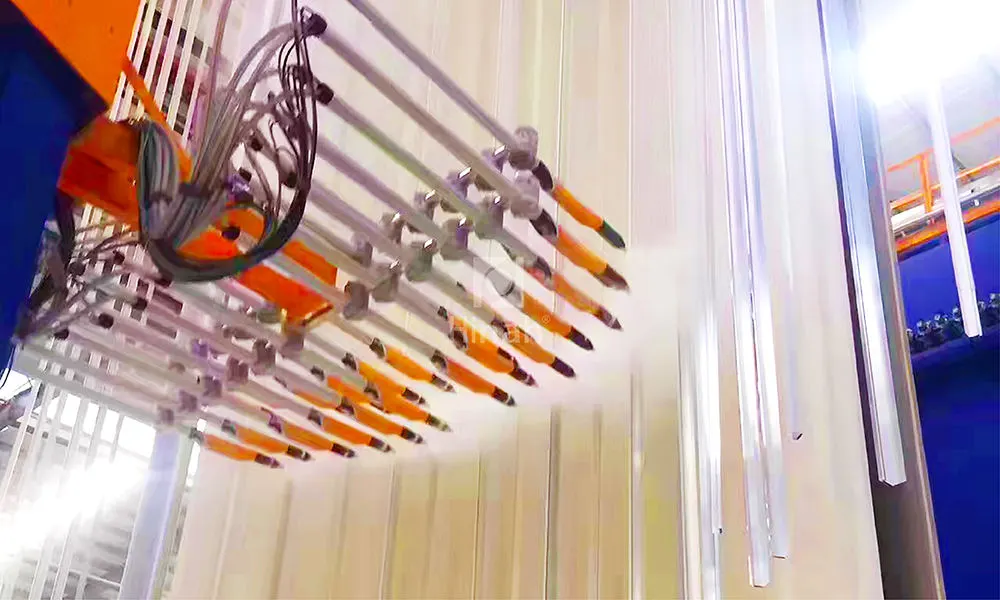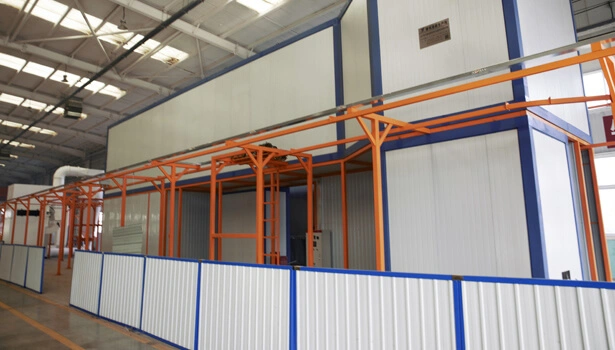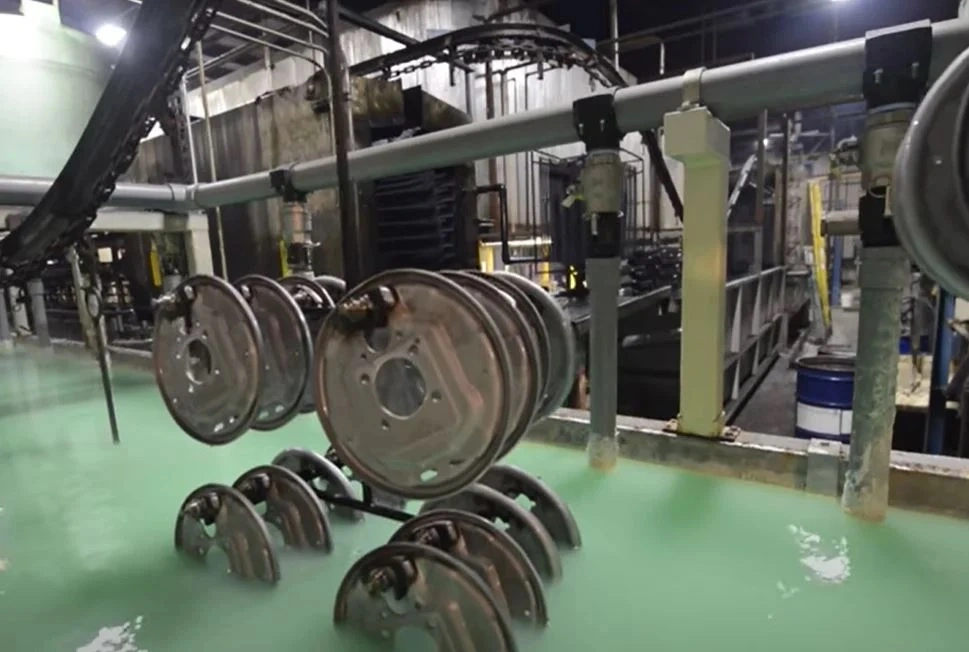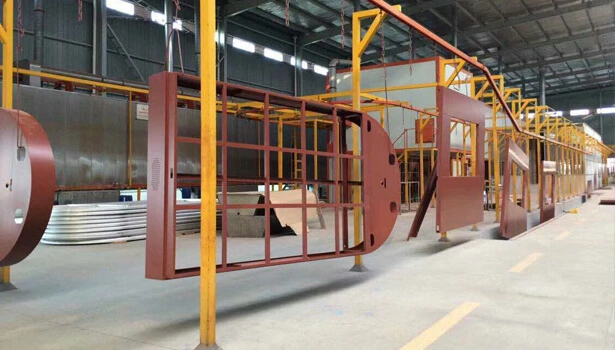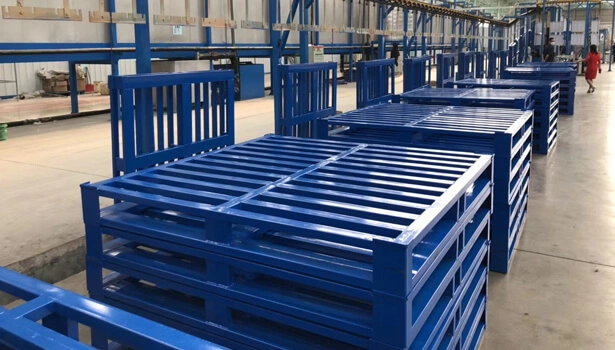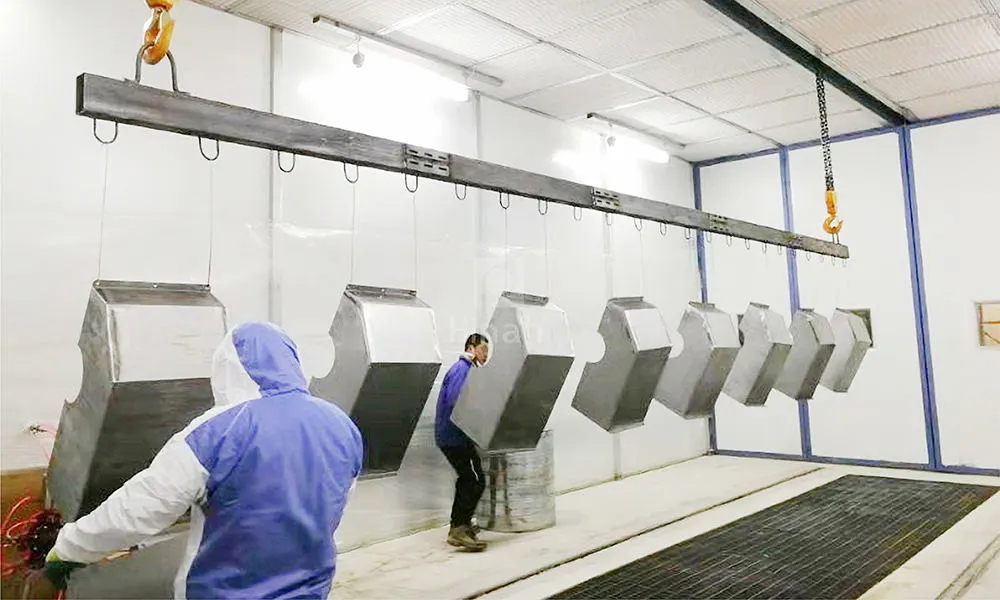Automatic Dipping Paint Line
Core Process Flow:
1.Pre-Treatment: Parts typically undergo automated cleaning (degreasing, rinsing) and chemical pre-treatment (e.g., phosphating, chromating) stages to ensure optimal surface preparation for paint adhesion and corrosion resistance. Conveyor systems move parts seamlessly between tanks.
2.Dipping/Immersion: The heart of the line. Pre-treated parts are automatically lowered into a precisely controlled bath of paint or coating solution (often water-based). In E-coat lines, an electrical current is applied, causing the paint particles to migrate and deposit uniformly onto the part's conductive surface. In conventional dipping, parts are simply immersed and withdrawn.
3.Drainage & Rinsing: After withdrawal, parts move to controlled drainage zones and subsequent rinse stages (RO/DI water rinses for E-coat, specific solvent or water rinses for other dips) to remove excess, unadhered paint, maximizing material utilization and finish quality.
4.Curing/Oven Drying: Coated parts enter precisely controlled ovens (convection, infrared, or combination) where the paint film is baked at specific temperatures and durations to achieve full cure, hardness, durability, and desired finish properties.
5.Cooling & Handling: Finally, parts are cooled, inspected (often automatically via vision systems), and unloaded for further assembly or packaging.
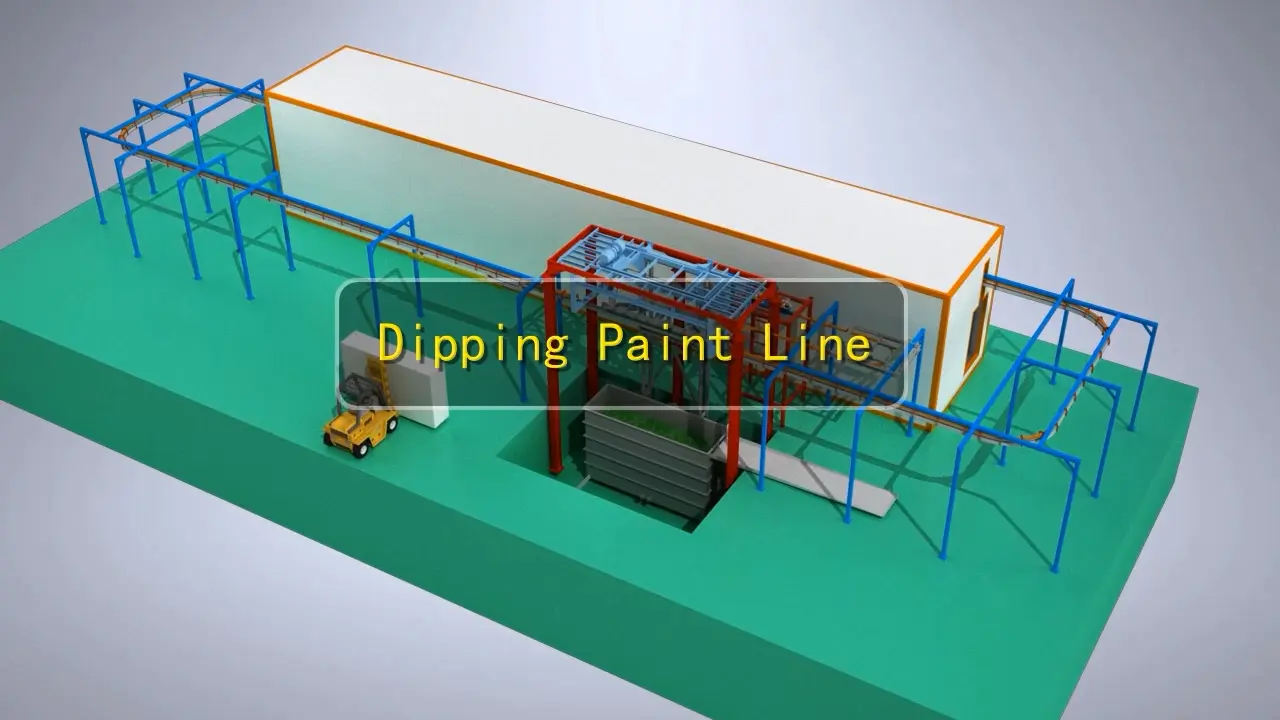
Key Advantages of Automation:
•Exceptional Uniformity & Coverage: Immersion ensures complete coverage, including complex geometries, recesses, and internal surfaces often missed by spray methods. E-coat offers unparalleled edge coverage and corrosion protection.
•High Efficiency & Throughput: Continuous conveyorized operation enables processing large volumes of parts 24/7 with minimal manual intervention, significantly boosting productivity.
•Reduced Material Waste & Costs: Precise bath control, efficient drainage, and rinse recovery systems dramatically minimize paint overspray and consumption compared to spray booths.
•Enhanced Consistency & Quality: Automation eliminates human variables (fatigue, technique variation), delivering highly repeatable coating thickness, appearance, and performance batch after batch.
•Improved Environmental & Safety Profile: Enclosed systems, water-based chemistries (common in E-coat and modern dips), and efficient exhaust/capture systems significantly reduce VOC emissions and solvent usage. Operators are shielded from direct exposure to paints and solvents.
•Lower Labor Costs: Requires fewer operators primarily for monitoring, maintenance, and loading/unloading compared to manual spray lines.



